I’ve challenged myself to try twelve new outdoor (and outdoor-adjacent) activities in 2025 to get out of my comfort zone and have some new adventures. This is a recap of one of those attempts.
I reached a turning point in my birding journey last week. I didn’t suddenly become an encyclopedia of songs and markings, but a small spark of confidence flared inside me as I hit a hot streak of successful identifications.
Let me set the scene.
Spring had asserted itself throughout the eroded remnants of an ancient mountain range in northwestern Wisconsin. Though always beautiful1, the Blue Hills were looking especially snazzy in a new coat of trillium and ferns.2 The lush moss and newly sprouted tamarack needles3 added variations of bright green to the mix, which made the pink petals of Swamp Laurel and the fluffy white tops of Tussock Cottongrass all the more noticeable. To accompany this vibrant palette was an equally vibrant soundtrack of birdsong, so loud and multi-layered that an airport would seem as quiet as a library reading room in comparison.
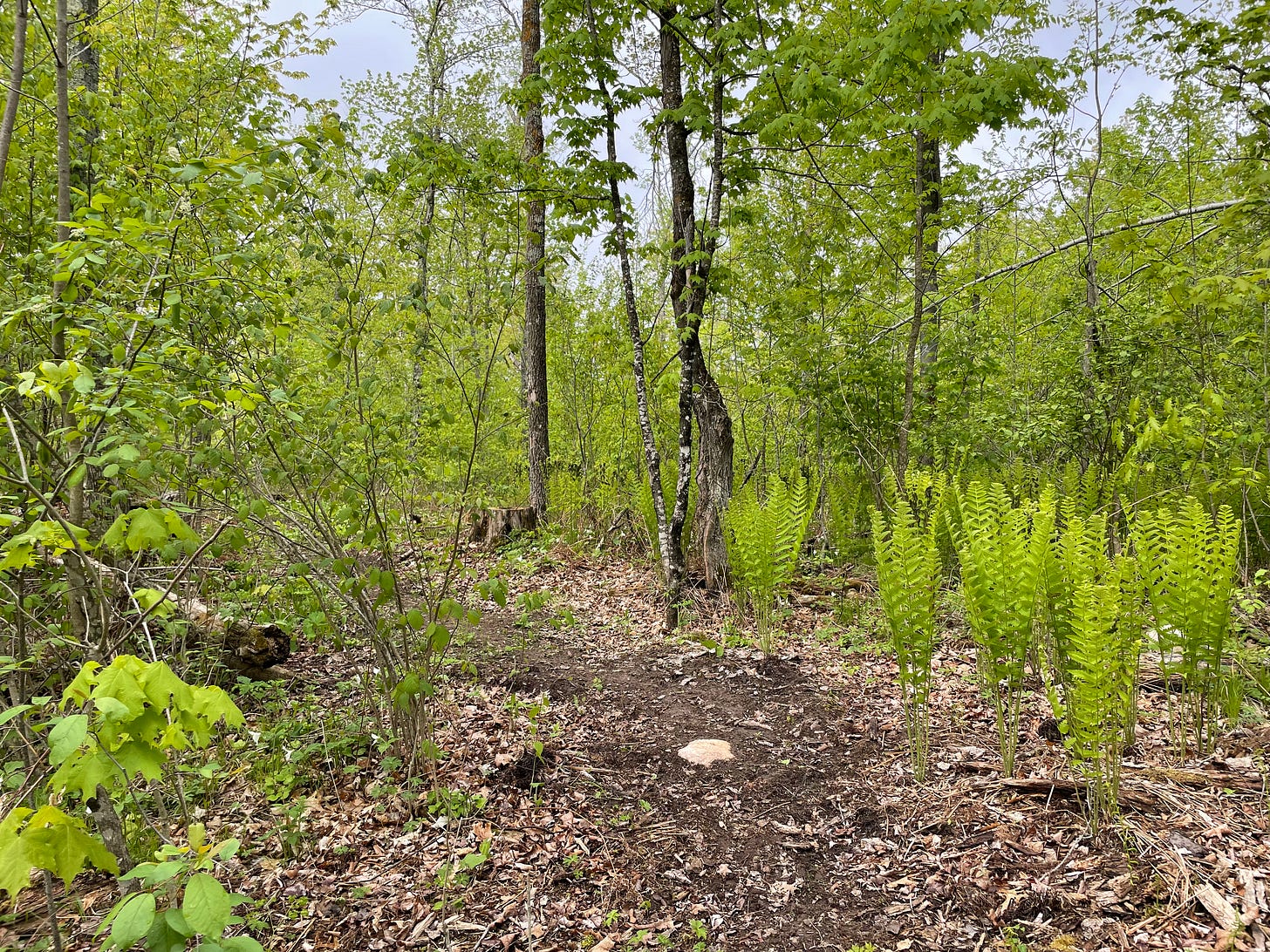
I didn’t plan to do any birding while in the Blue Hills for a volunteer trailbuilding event4, but the birds were so insistent that it was hard not to pay attention. Two Barred Owls spent each night calling to one another over my tent, loud enough to rouse me from sleep and then keep me awake until I identified the who cooks for you call in my semi-delirious state. Luckily, the American Woodcock picked someone else’s tent to serenade at dawn, so I was able to sleep in until the American Robin's solo drove me towards the coffee urn.
On the final morning, after tools were cleaned and base camp was packed up, I set off for a solo hike to the bog. I brought nothing but a small water bottle, phone, and car keys—no binoculars or field guides.5 After all, I wasn’t birding, I was searching for tamarack cones.6
Perhaps that is why none of the birds minded my presence as I wandered down the trail. Actually, let me amend that statement: none of the birds except for the Ruffed Grouse minded my presence—the flurry of flapping wings as I inadvertently got too close startled me as much as I seemed to startle it.
Though I was not actively trying to identify birds on my walk, one repeated song tickled my memory banks. Was that the same tune I had heard the previous weekend on top of Bald Bluff?7 I pulled up the Merlin app and confirmed that it was indeed a Rose-breasted Grosbeak, harmonizing with a half dozen different kinds of warblers.
Eventually, the sweet voices of songbirds were interrupted by the much less glamorous honking of Canada Geese…and the sound of trumpets? Could that be the pair of Trumpeter Swans that love to hang around Hemlock Creek? Merlin once again confirmed my guess—gosh, I’m getting good at birding by ear!
Around the next bend, the trees thinned out a bit and I caught a glimpse of those swans gliding around on the water, apparently having asserted dominance over the Canada Geese, who were nowhere to be seen. As the lake fizzled into a grassy field, Sandhill Cranes popped into view, quietly foraging for their Sunday brunch. A swell of pride filled my chest as I tallied up the number of birds I had identified without even trying.
But none of them were a new bird for me, one I was successfully identifying for the first time. That didn’t happen until the last half mile of my hike.
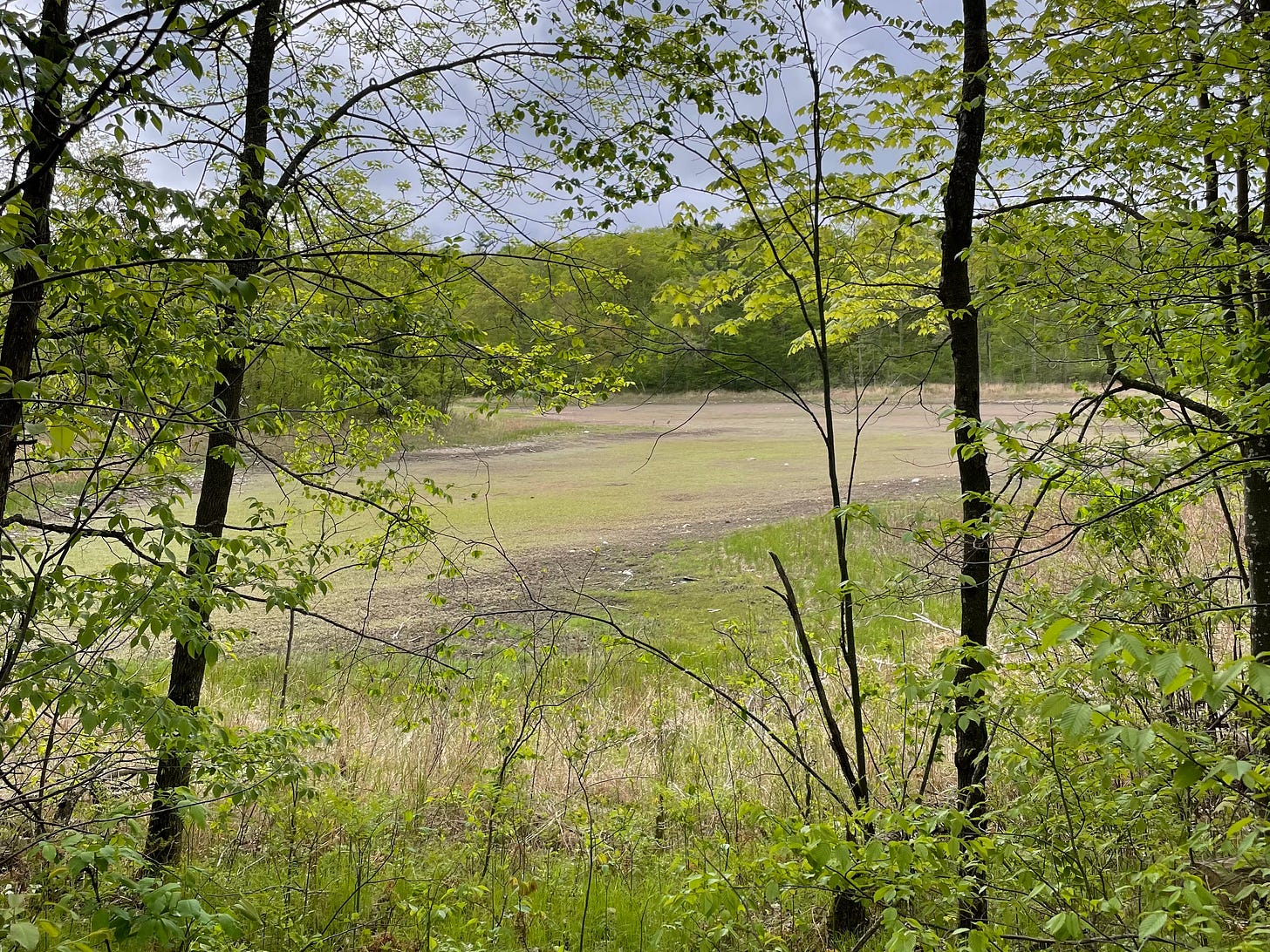
All weekend, another trail volunteer had been talking about a Scarlet Tanager she had seen hanging around camp. I didn’t know what a Scarlet Tanager looked like and I hadn’t been motivated enough to look up a photo—remember, I wasn’t doing any birding! However, on my return hike from the bog, I rounded a curve and came face-to-face with a red bird chilling on a branch.
Honestly, it felt too easy—someone had been talking about a bird named for its color and then I see a bird that color? I confirmed my suspicion with the Audubon app and then stood still and silent until the red feathers disappeared into a thicket of green. I may not be able to tell apart my sparrows or gulls, but identifying that Scarlet Tanager made me feel like maybe one day I will be able to call myself a real birder.
The Blue Hills through the seasons:
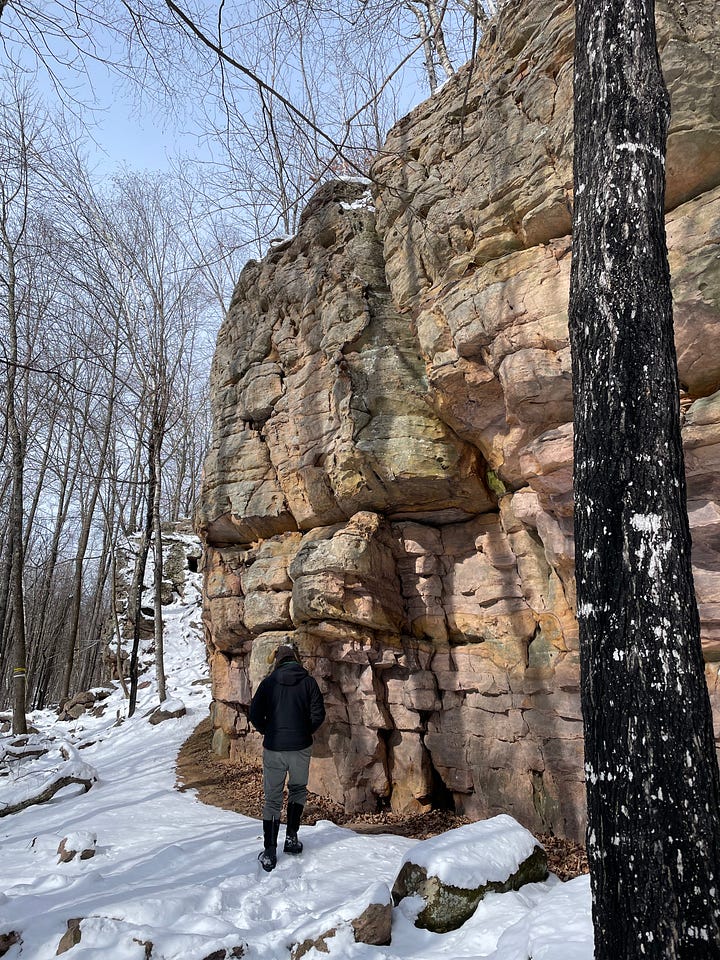

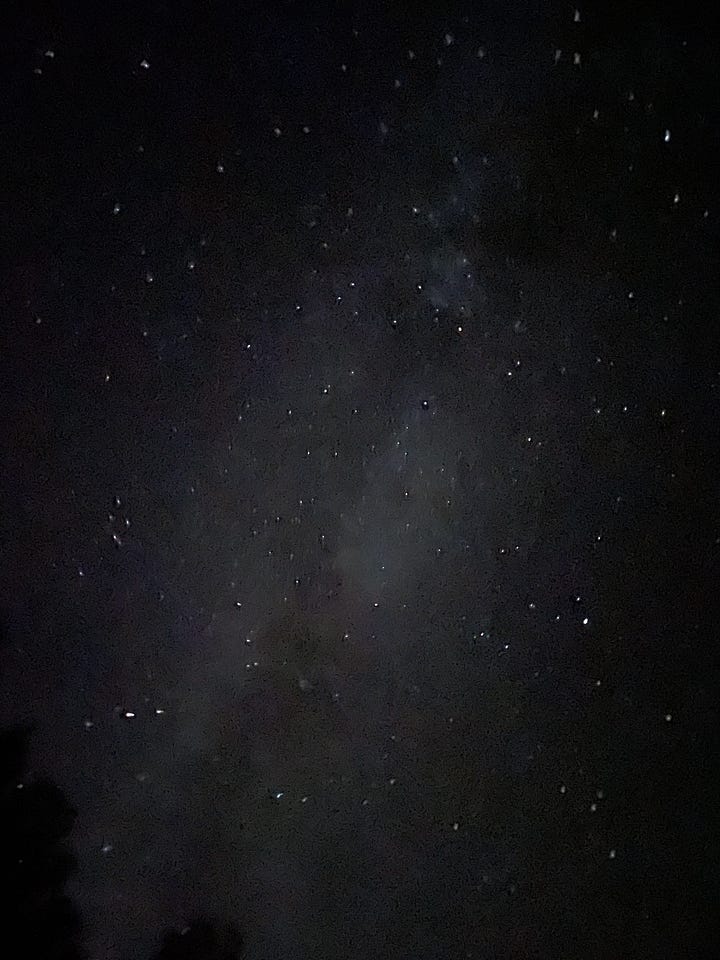
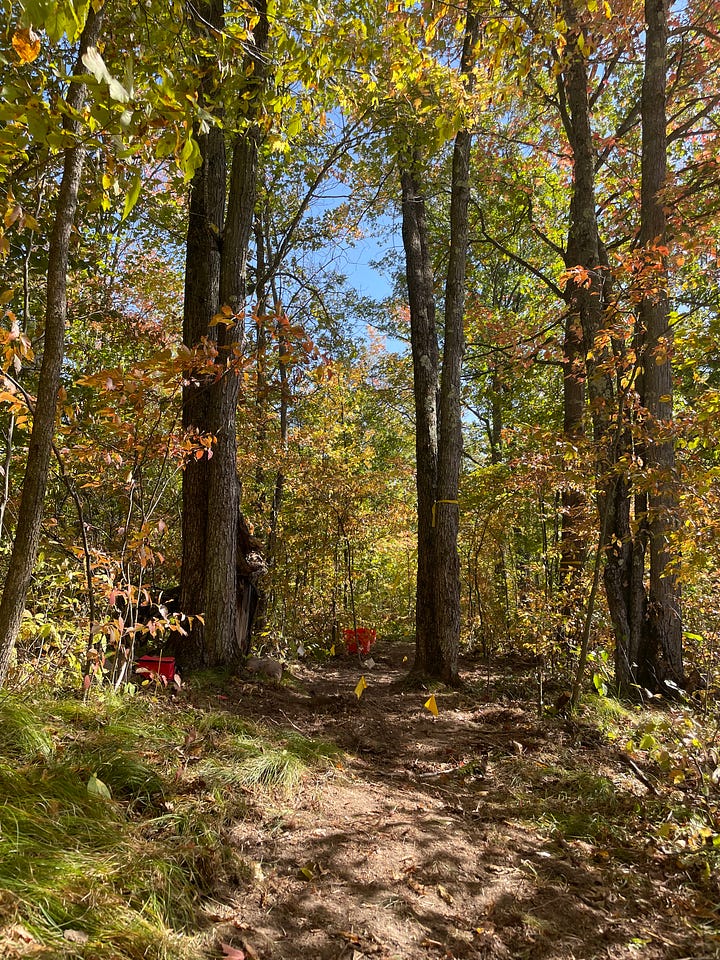
Specifically Interrupted Fern, Cinnamon Fern, and Large White Trillium.
Are the 10 Essentials Actually Essential?
Thanks to Ben for submitting this week’s question:
"What do you carry on a day hike? I know the “correct” answer is to always bring ALL the 10 essentials, but I want to see your actual packing list. I think it’s ridiculous to bring a firestarter on a five mile loop at a busy state park, but my buddy disagrees."
Tamaracks, Revisited
Once again, I walked into a bog in search of tamaracks. I suppose I’m making this a habit. Though it was a different bog and a different season and we’re all entitled to have a favorite tree, aren’t we?
A Postcard from the Moss: May 2025
I love sending postcards when I travel, so once a month I share photos with a postcard-length blurb about a place I’ve recently visited.






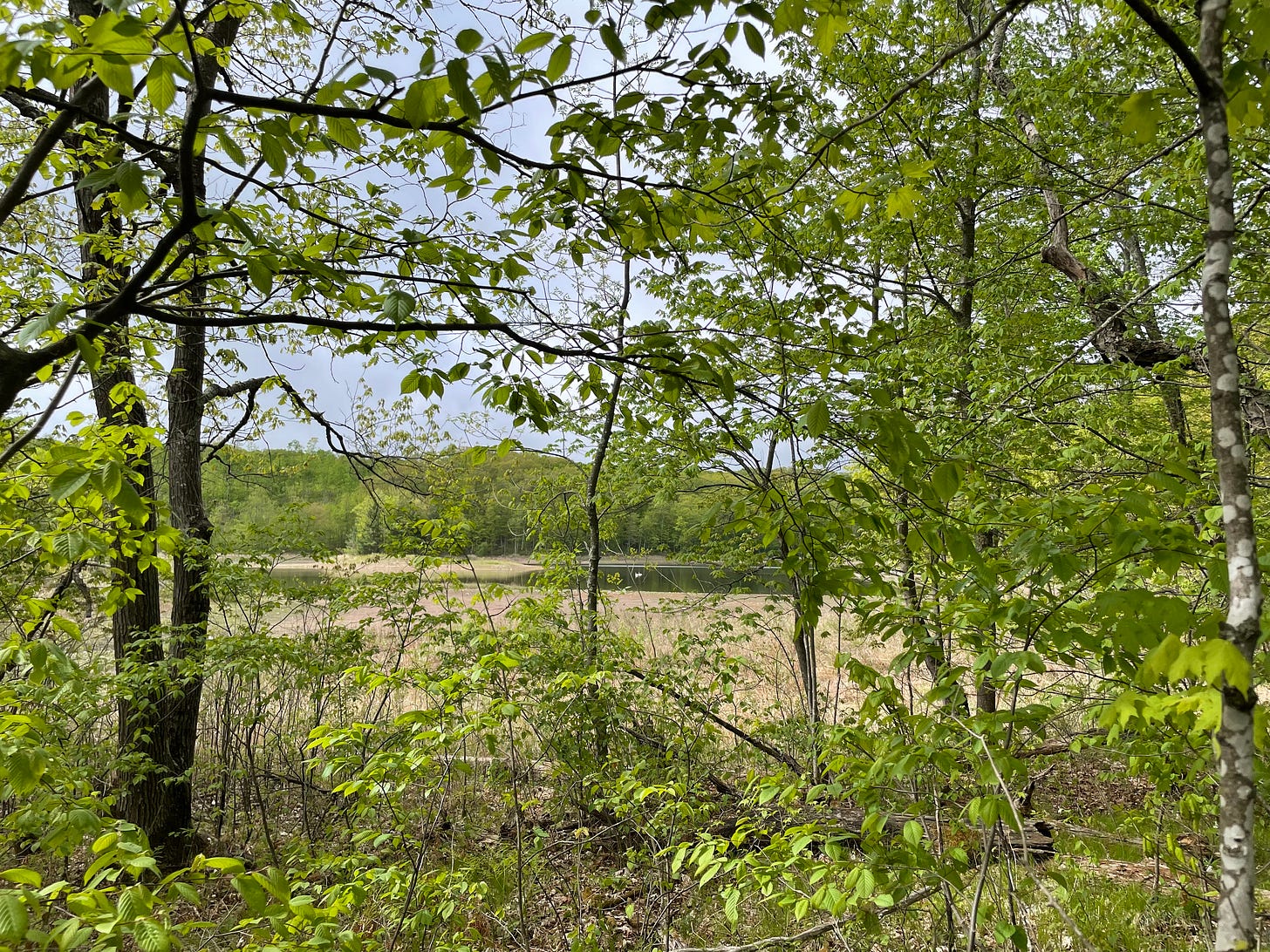

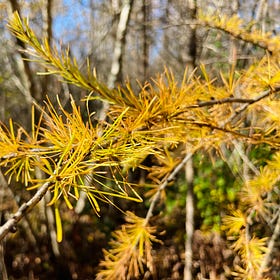

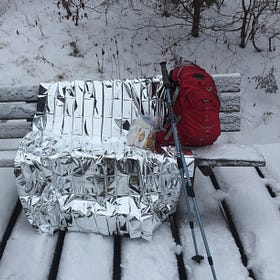
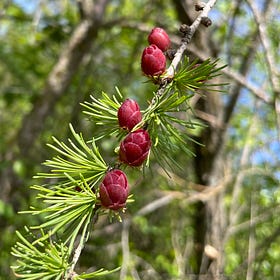
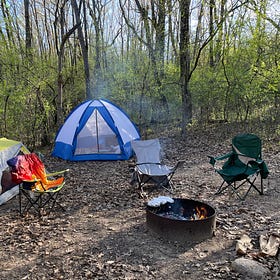
Based on all of those effortless song IDs, I think you are definitely a real birder! Beautiful writing in this essay, too, especially the opening paragraph of the scene. I was listening to AI voice reading while doing chores (the only way I can stay remotely up to date on Substack — listening and then scrolling through photos when I go to the app to click the heart button) and that grabbed my attention for sure.
Unrelated, after reading and the comments discussions about camping food I have a new hyperfocus on using my food dehydrator and blender to try all kinds of recipes. I haven't taken them camping yet and will report back when I do. I even bought new silicone dehydrator trays for fruit leather (etc) — no more relying on liners that can shift and spill things.
"I may not be able to tell apart my sparrows or gulls, but identifying that Scarlet Tanager made me feel like maybe one day I will be able to call myself a real birder." After reading this, it's safe to say you are a real birder, Alice! Even a "real" birder can have trouble with the sparrows and gulls, but not all people who spend time out birding then take the time to reflect and write about it. "I didn’t plan to do any birding while in the Blue Hills for a volunteer trailbuilding event, but the birds were so insistent that it was hard not to pay attention." Sounds like something a birder would say! Thank you for sharing this--sorry I'm a few days late, but once I saw the title I was sure to save this post to give it full attention.